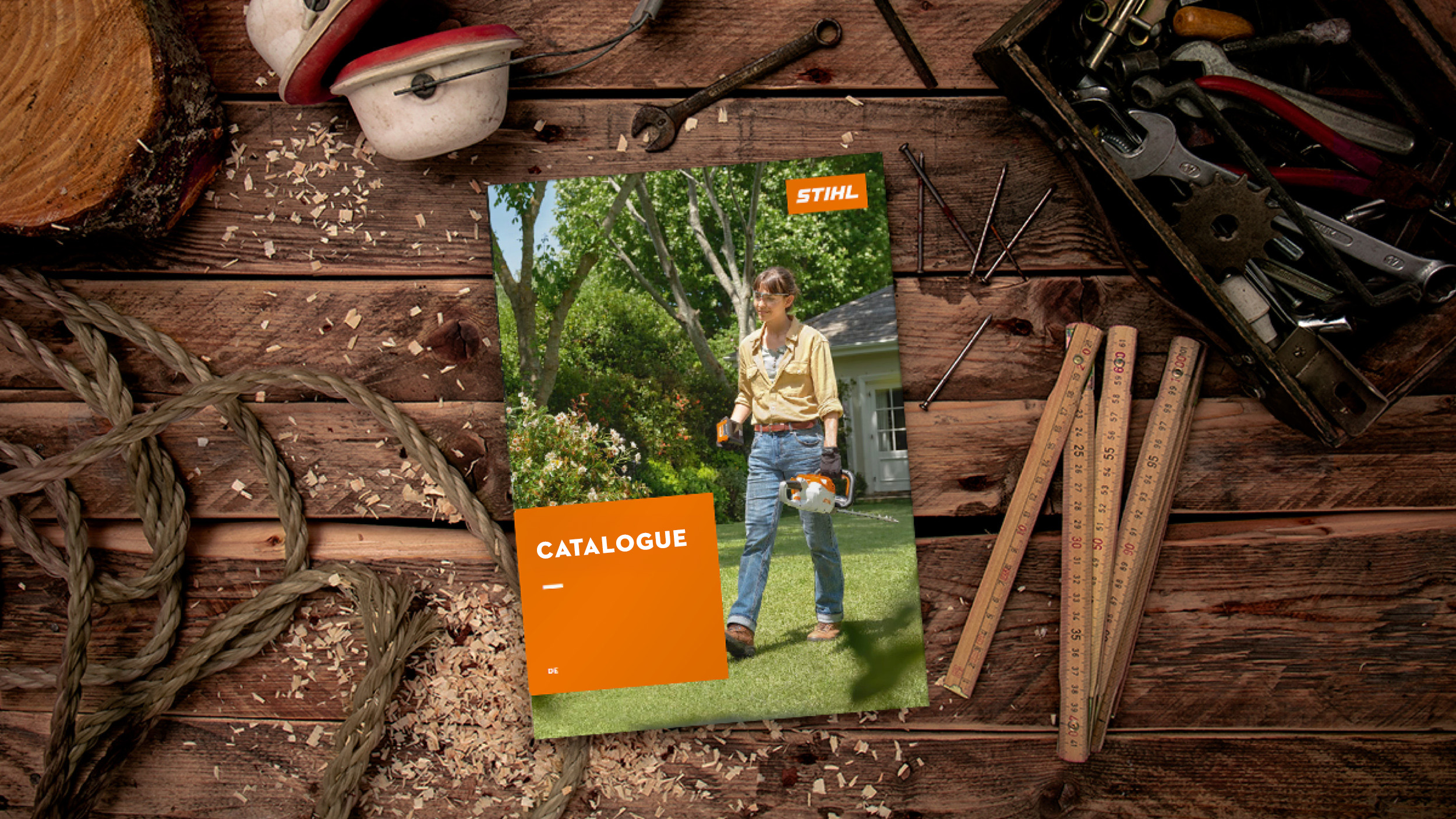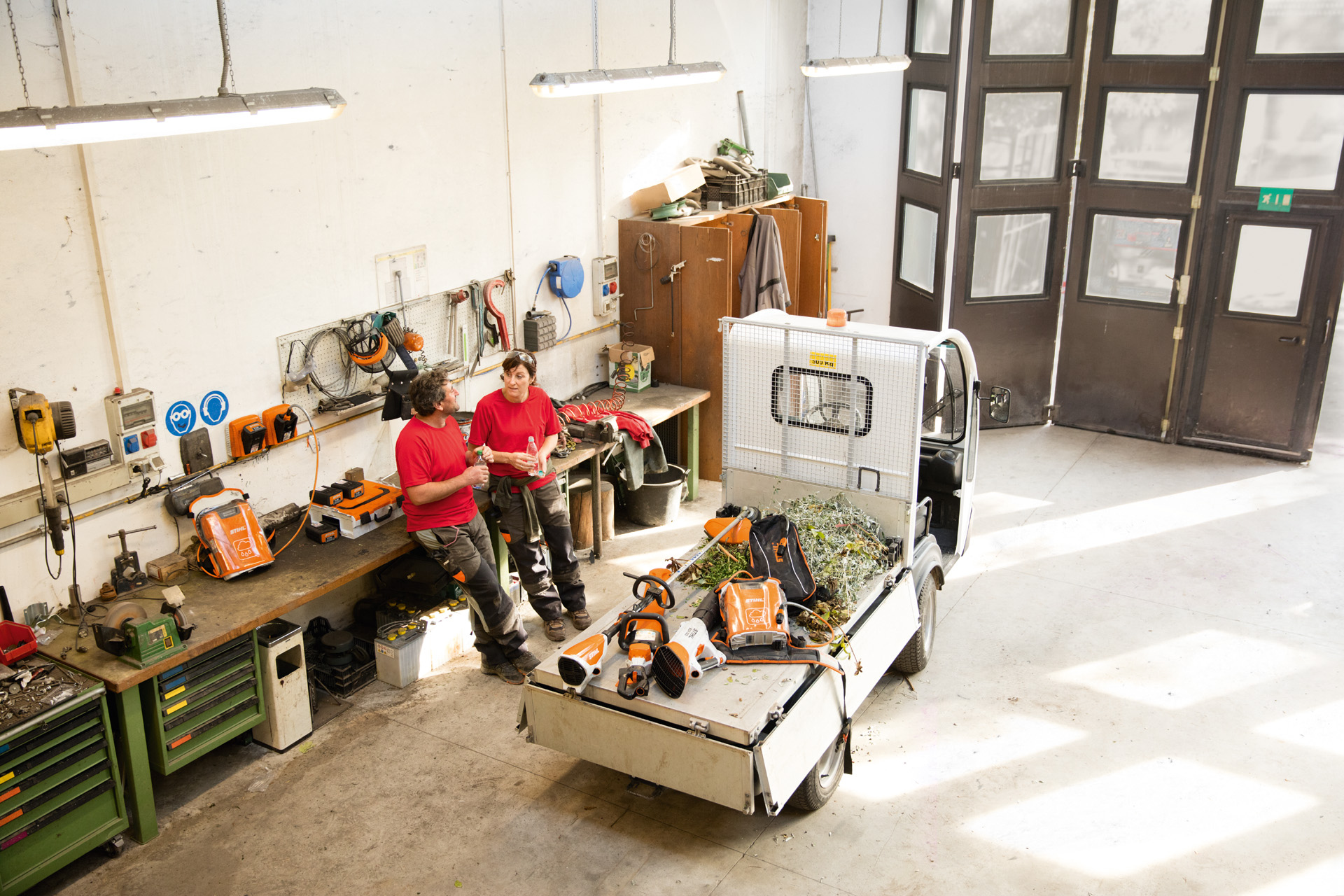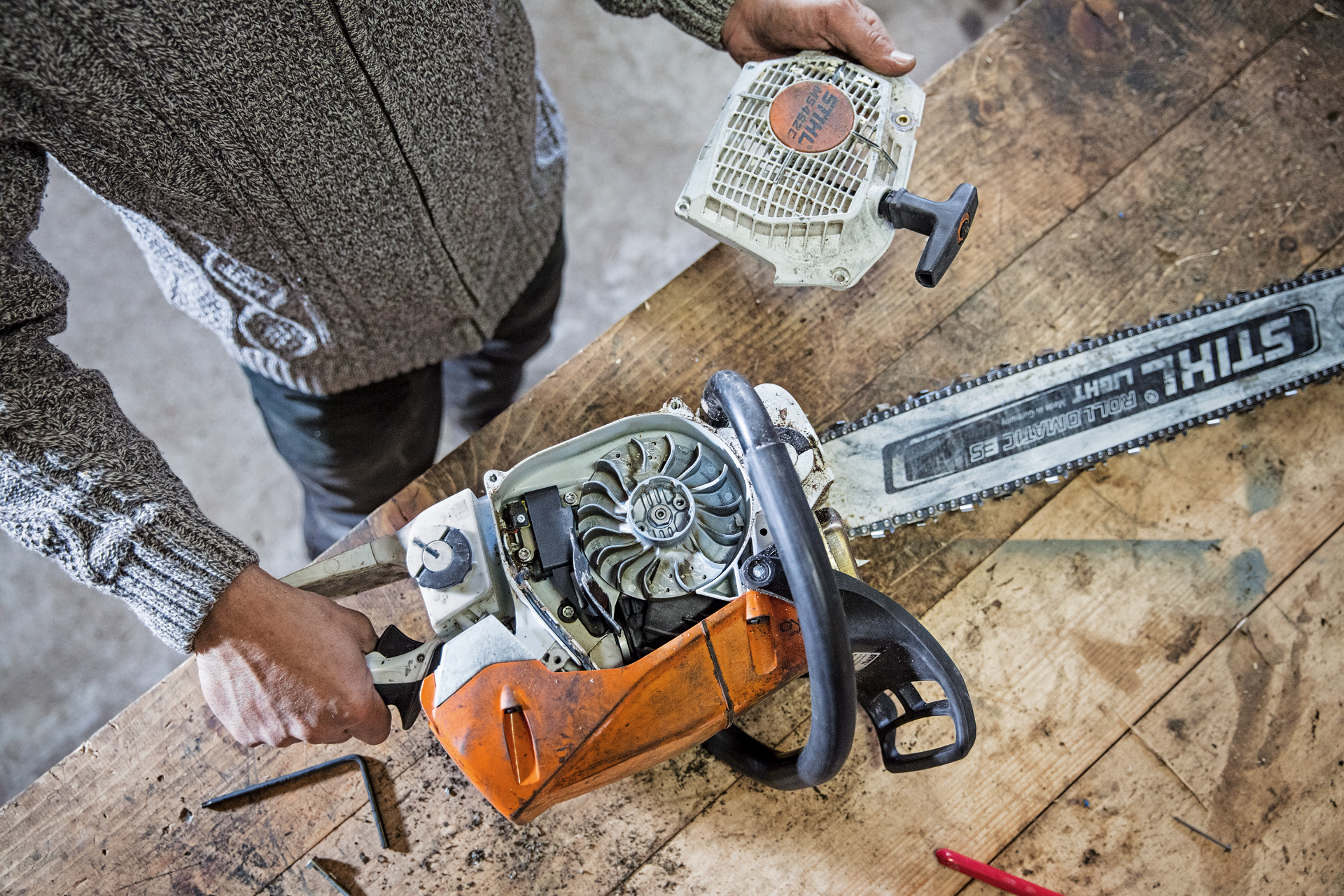Kickback test: The kickback test bench is used to test how the overall system consisting of chainsaw, guide bar and chain behaves in the event of a kickback. This data is incorporated into the development to produce guide bars that ensure maximum safety for users.
Bending test: This tests the rigidity of the guide bar. The STIHL guide bars may deform under high force in the wood, but then return to their original, straight position.
Hardness test: This test ensures that all materials incorporated in the guide bar have the intended hardness.
Dimensional check: Exact dimensions are a basic requirement for every STIHL guide bar. This test therefore checks whether the bar meets the detailed specifications.
Approval and worldwide testing
When a guide bar is released for series production, the required production aids are created. The first series production units undergo all the tests again before they are given to STIHL customers for testing in practical use worldwide.
Feedback on the general handling in use and on the behaviour of the guide bar under a wide variety of climatic conditions is provided directly to the development department in Waiblingen. This means that the properties of the guide bar can be tested and confirmed under real conditions on the one hand and, on the other hand, a wide range of experiences and feedback can be incorporated directly into the development of the guide bar.














